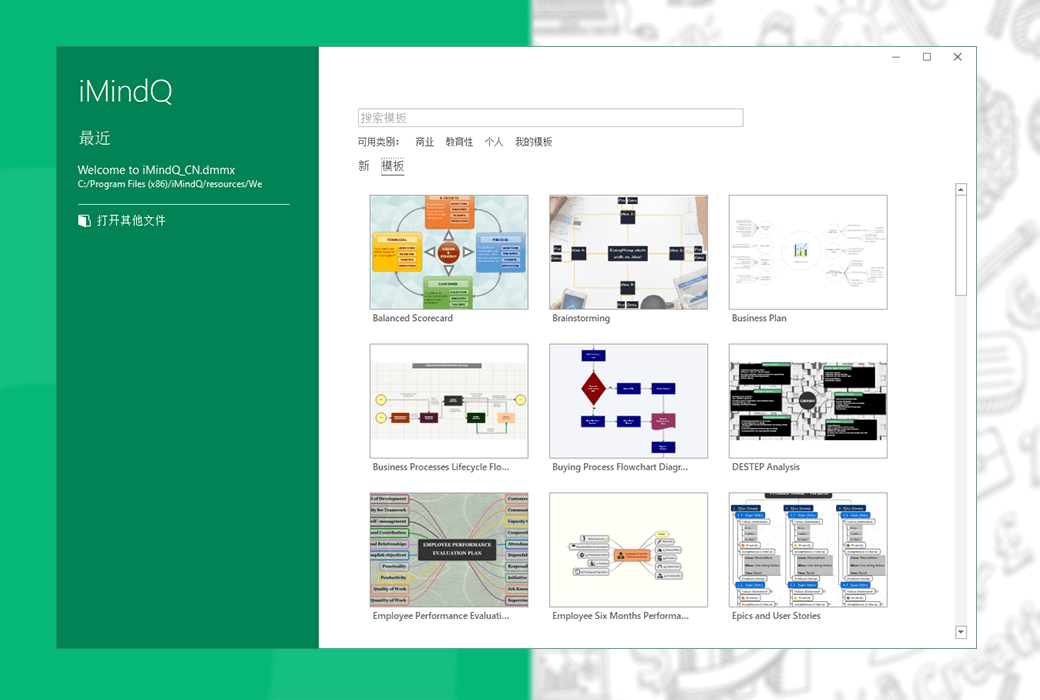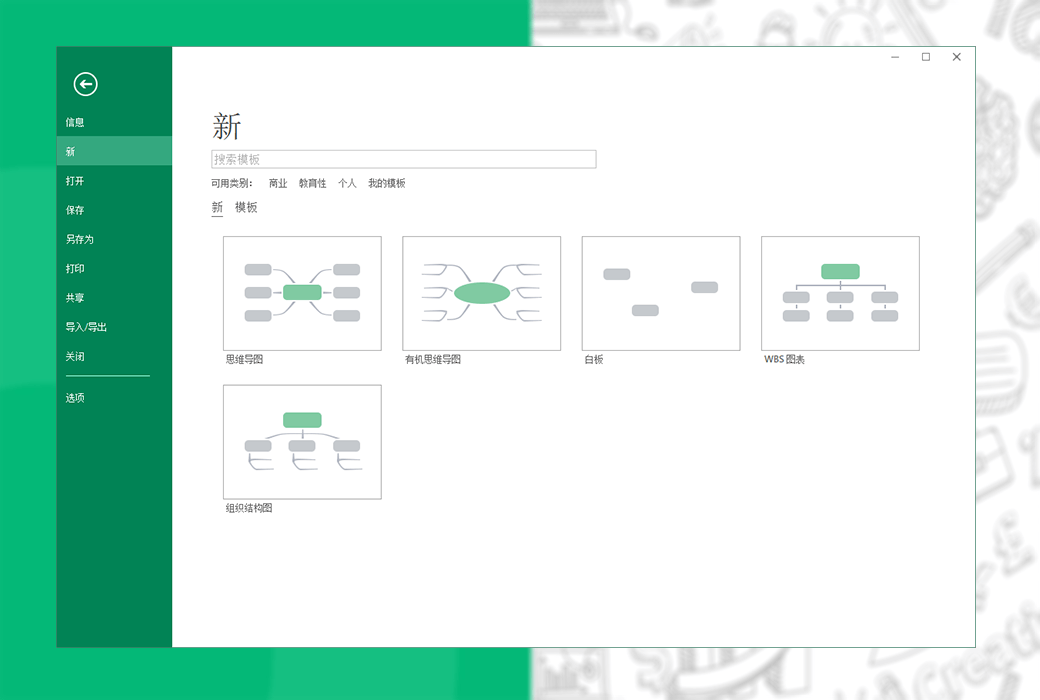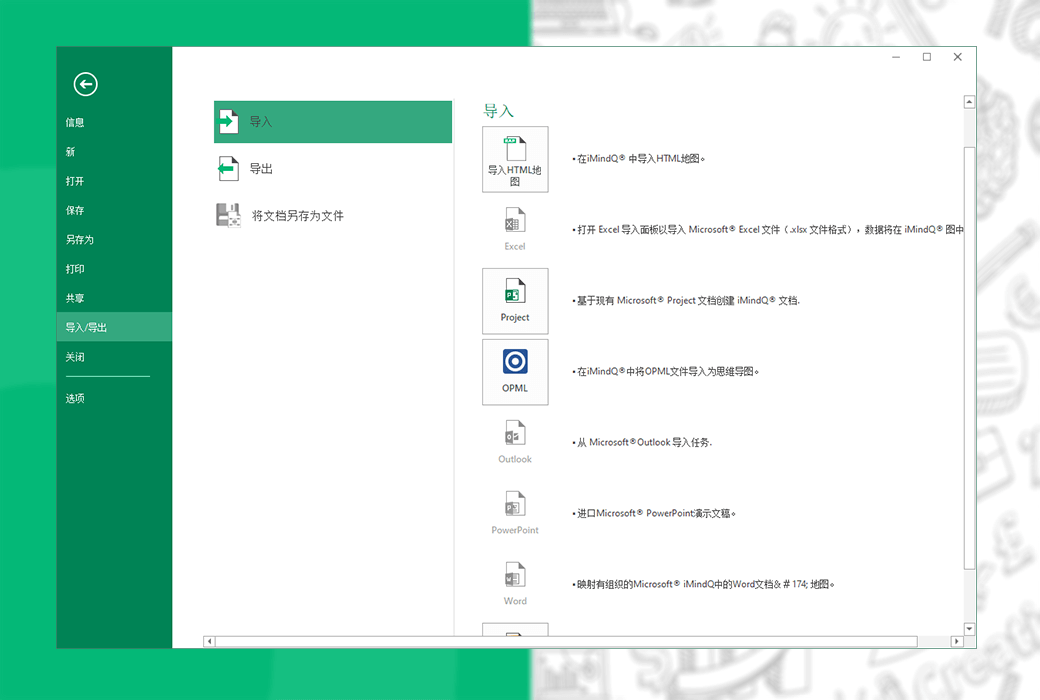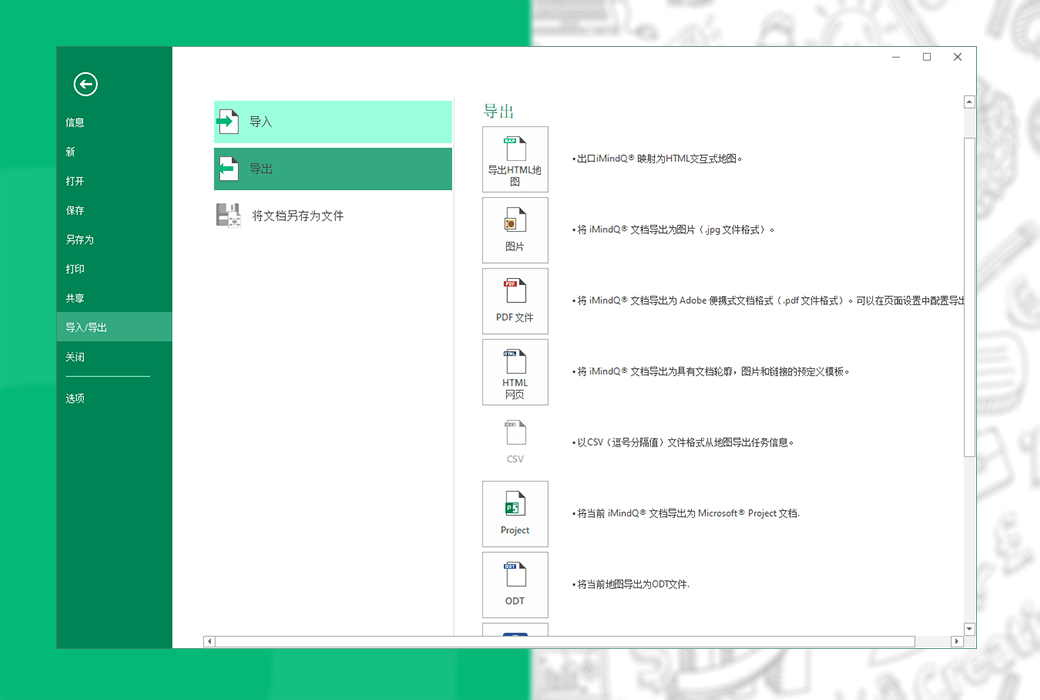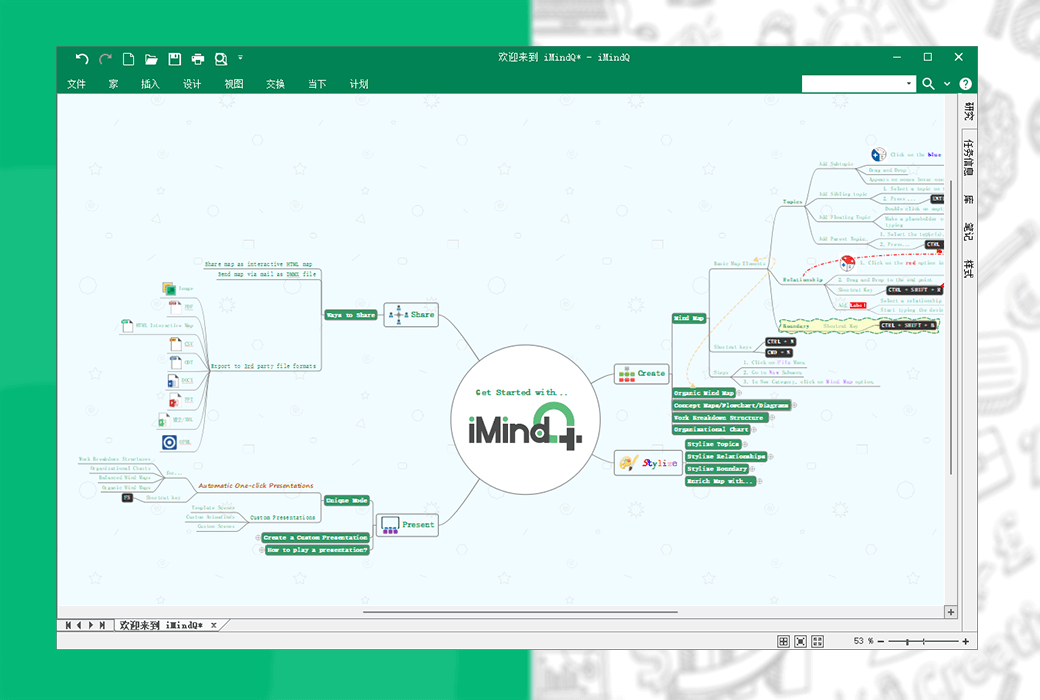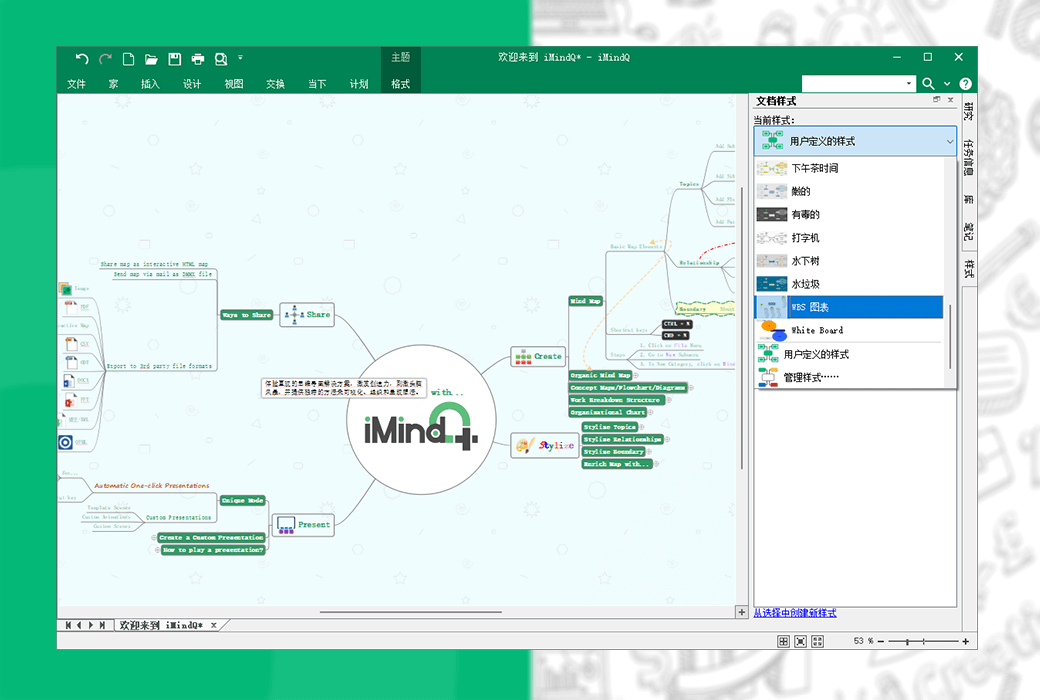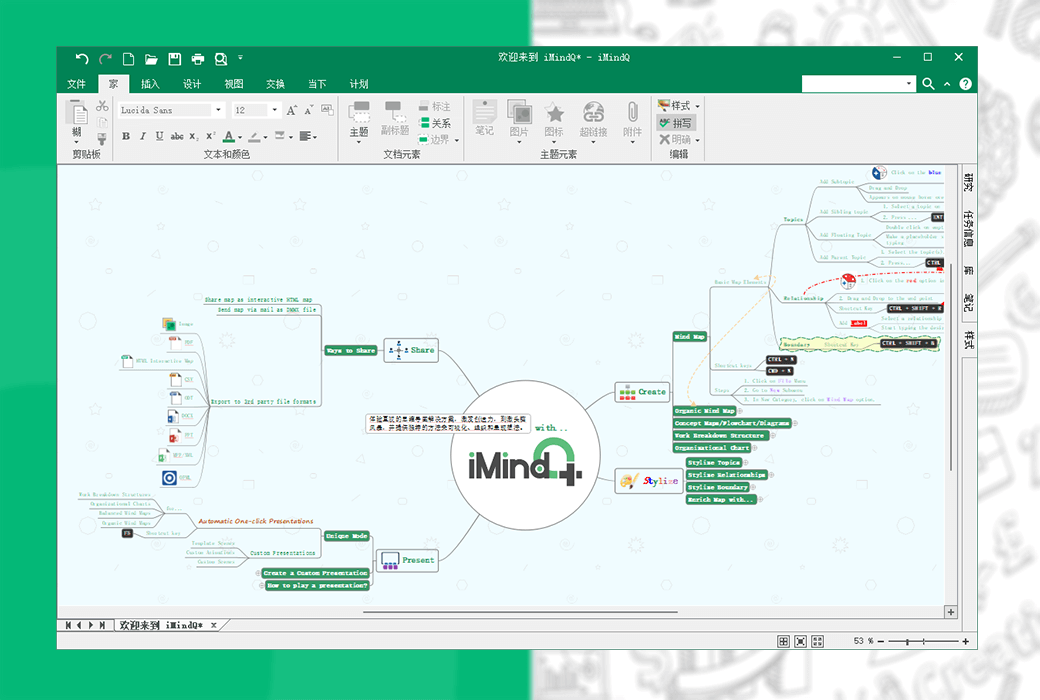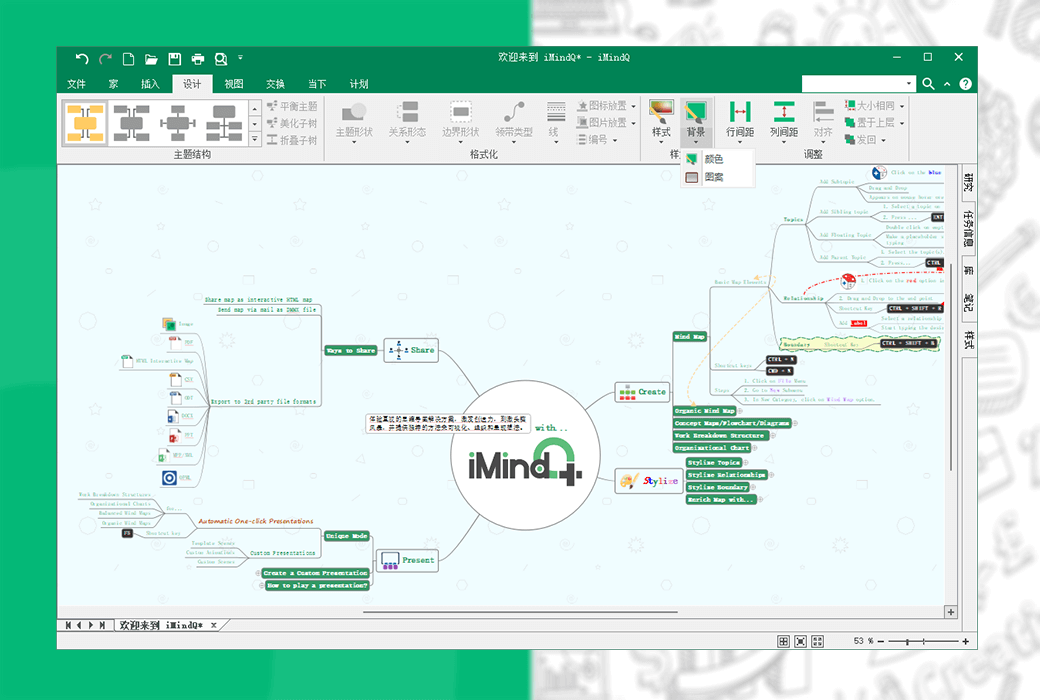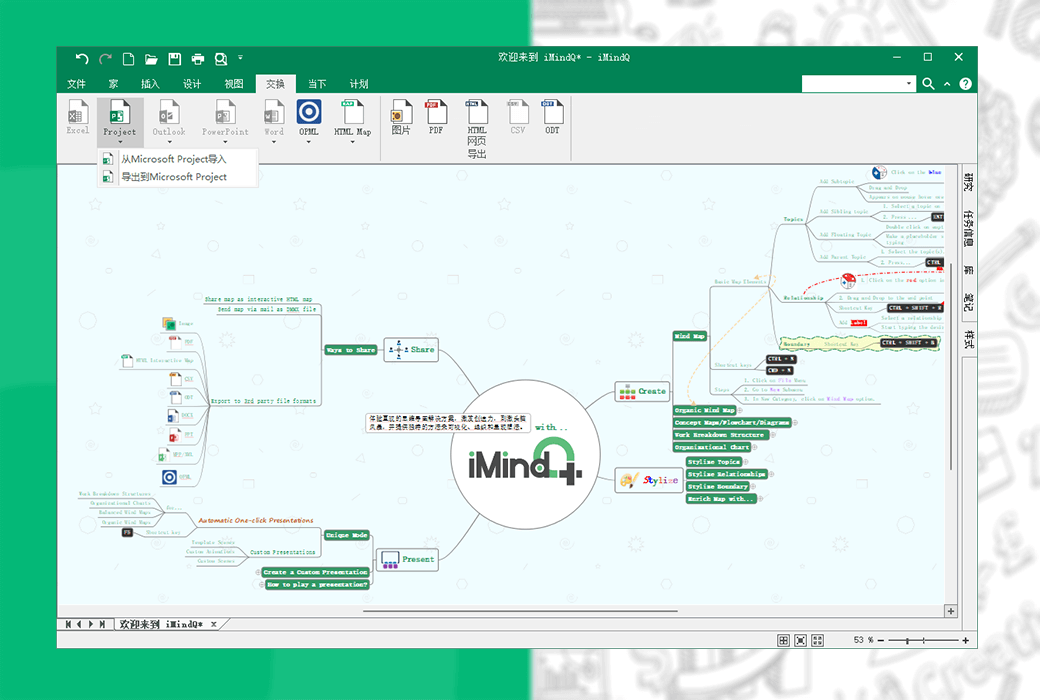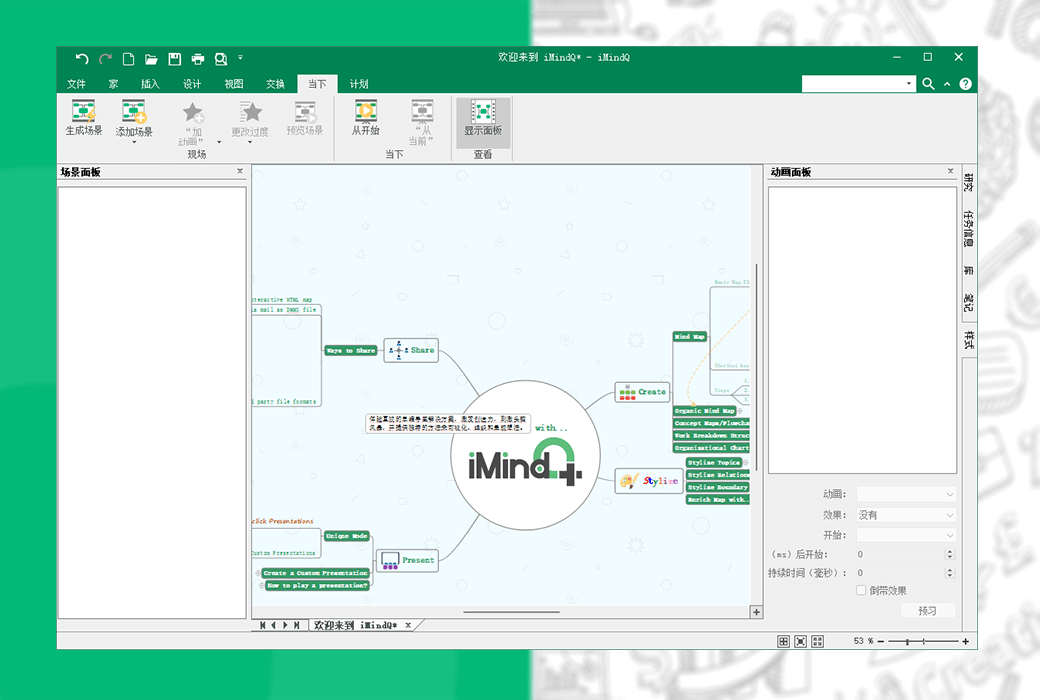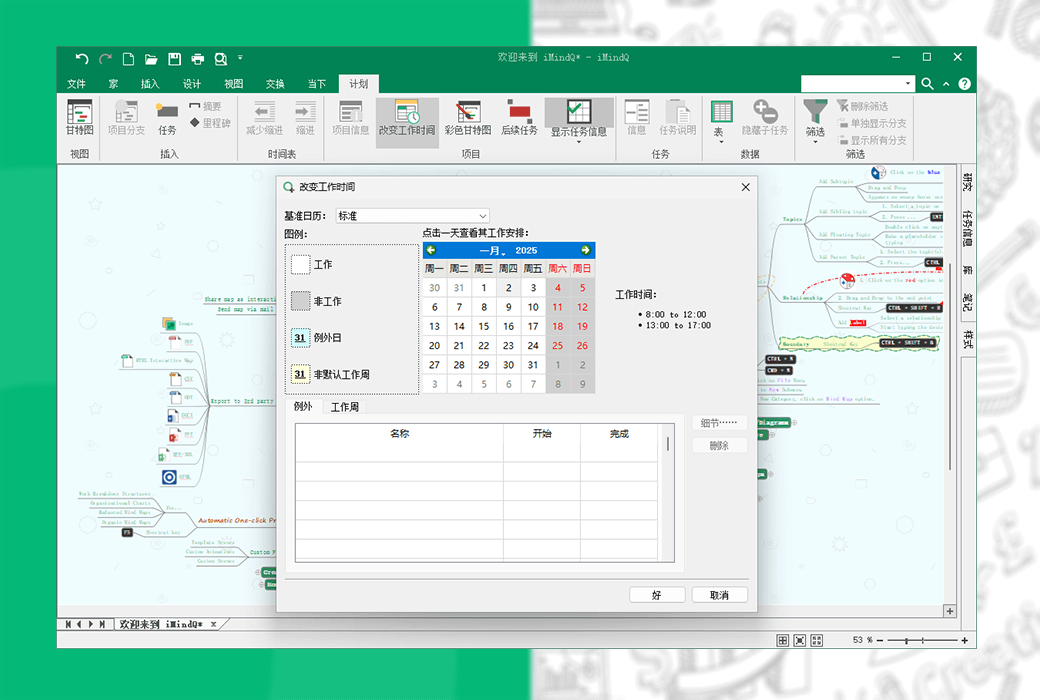You haven't signed in yet, you can have a better experience after signing in
 IMindQ Professional Multi functional Mind Mapping Tool Software
IMindQ Professional Multi functional Mind Mapping Tool Software

Activity Rules
1、Activity time:{{ info.groupon.start_at }} ~ {{ info.groupon.end_at }}。
2、Validity period of the Group Buying:{{ info.groupon.expire_days * 24 }} hours。
3、Number of Group Buying:{{ info.groupon.need_count }}x。
Please Pay Attention
1、Teamwork process: Join/initiate a Group Buying and make a successful payment - Within the validity period, the number of team members meets the activity requirements - Group Buying succeeded!
2、If the number of participants cannot be met within the valid period, the group will fail, and the paid amount will be refunded in the original way.
3、The number of people required and the time of the event may vary among different products. Please pay attention to the rules of the event.

IMindQ Professional Multi functional Mind Mapping Tool Software


IMindQ Professional Mind Mapping Software
Experience intuitive mind mapping solutions, inspire creativity, stimulate brainstorming, and provide unique ways to visualize, organize, and present ideas.
IMindQ is positioned as a professional mind mapping software and is an excellent tool that integrates multiple types of mind mapping styles. It can be used for business, education, and personal purposes, and can be used by any department of an organization, school system, or university. In addition, iMindQ can also help individuals inspire learning, organize, and visually present ideas.
Mind maps, concept maps, flowcharts, Gantt charts, organizational charts, WBS charts, and other types of charts are increasingly being used to present key information in a format that is relatively easy to remember and understand. These charts are best created using iMindQ. It is a great tool when generating new ideas or attempting to maximize the use of a large amount of work or information overload.
How can iMindQ help you?
- Concept map
A concept map is a visual representation of concepts and ideas connected around a central concept.
- Creative brainstorming
Brainstorming meetings through mind maps can ensure team members' understanding, memory, and increased participation.
- Project Planning
Plan the project by creating a WBS based on deliverables and visually analyze the results using a Gantt chart view.
- Exciting speech
Just one click to present your mind map, leaving a powerful visual impact and providing an overview of the entire topic.
- Team collaboration
Collaborate and share ideas with friends and colleagues through a unique HTML mind map experience.
IMindQ Use Case
- education
Explore numerous practical scenarios where mind maps can be used in education.
- business
Mind maps have applications in many fields of business. Take a look at some of our use cases.
- personal
As a technology, mind maps can be used to improve and organize many of your activities and daily habits.
Daily use of iMindQ
IMindQ provides a flexible set of features suitable for both business and personal use. Browse some of these features and see how they can help you turn your ideas into reality.
- Add theme elements
Personalize the appearance of your map by using annotations, icons, images, hyperlinks, alerts, and other rich map themes You can directly add attachments from your computer and easily manage them, add custom properties, and customize dates and times.
- Demo mode
Just click the button to visualize the mind map and ideas. Use the many available options in presentation mode to create your own custom presentation.
- Project planning mode
Create a WBS, transform your ideas into tasks, and preview them using a Gantt chart view. Add task information such as priority, duration, resources, and constraints.
- Research group
Search for information online while creating a mind map, and simplify the mind map experience with the help of the research panel.
- Import and export maps
Import or export your mind map in one of the following formats: HTML; Excel(.xlxs); Microsoft Project(.mpp); OPML; PowerPoint(.pptx); Word(.docx); In addition, you can also open mind maps created using MindManager, XMind, and FreeMind.
- Mind map style
Use the 'Map Style' feature to design the appearance of the map. Choose from a variety of available designs, or create and manage custom styles that best suit your needs.
- Mind map template
With the help of a mind map template, you can start drawing a mind map with just a few clicks. Whether you are conducting marketing analysis or brainstorming with colleagues, you can rest assured that you will find a template that suits you and your team.

Official website:https://www.imindq.com/
Download Center:https://imindq.apsgo.cn
Backup Download:N/A
Delivery time:Manual processing
Operating Platform:Windows
Interface language:Supports Simplified Chinese interface display and supports selection of other languages.
Update Description:Supports one-year maintenance and updates, and can continue to use the current version after one year.
Trial before purchase:Free 15 day trial before purchase.
How to receive goods:After purchase, the activation information will be sent to the email address at the time of placing the order, and the corresponding product activation code can be viewed in the personal center, My Orders.
Number of devices:Can install one computer.
Replace computer:Uninstall the original computer and activate the new computer.
Activation guidance:To be added.
Special note:To be added.
reference material:https://synamistore.com/collections/imindq

Any question
{{ app.qa.openQa.Q.title }}
How to create and insert your first mind map element?
After familiarizing yourself with the user interface and the location of the features to be used, the next step is to create your first mind map.
When you launch the application, iMindQ's workspace will welcome you, where you will see an introduction image.
If this is your first time using the application, a beginner's guide will be launched to help you create maps.
You can exit the tutorial at any time by pressing the ESC button.
You can open a new map in iMindQ in multiple ways.
The most common practice is to use the File menu. From the ribbon, select the File button located in the upper left corner and form the provided options, then choose the New tab.
From here, you can choose to use mind maps, organic mind maps, whiteboards, WBS charts, or organizational charts.
Another way to open the map is to access it from the Quick Access toolbar by selecting the New Map button or choosing CTRL+N from the keyboard.
After opening the new map, you can start adding map elements.
1. Insert theme
The first step in creating a new map is to name the central theme.
To do this, you need to click on the central topic and start writing. To expand your map and add main themes, you need to click on the central theme and select the 'Insert' keyboard button.
Please note that if you continue to press the ENTER keyboard button, subtopics will be added to the main theme. This operation needs to be performed every time the main theme is added to the central theme.
You can include floating themes as part of the map by double clicking on the location in the workspace where you want to insert the floating theme. In addition to inserting keyboard buttons, themes can also be added to the map from the Insert ribbon, map element group, or Q menu.
To insert a theme from the Q menu, hover over the theme and click the button marked with a blue plus sign. Each theme inserted into iMindQ can be formatted with the help of the dynamic formatting ribbon. When you select the theme to edit, the dynamic formatting ribbon will be displayed.
If you click on this ribbon, you can change the text and color of the theme, select the shape of the theme, the contact type of the map, and the theme structure. In addition, you can change the spacing and even add numbering to the theme of the map.
2. Insert Relationship
After adding themes to the map, you can connect them with relationships.
By adding relationships between themes, you can indicate that there is a logical connection between these two concepts.
The simplest way to insert a relationship is to hover over the theme of the Q menu you want to open, then click the relationship button and drag the relationship row to the theme you want to connect to.
You can add tags to the relationship. To do this, click on the relationship and start writing the name of the label. In addition to the Q menu, you can also add relationships from the "Insert Ribbon" by clicking the "Relationships" button or pressing CTRL+SHIFT+R.
In addition, you can also set the format of the relationship. When you click on a relationship, a dynamic Format Ribbon will appear.
From this ribbon, you can change the color, pattern, width, and style of relationships.
3. Insert Callout
You can add annotations to themes and relationships.
Annotations are descriptive topics used to insert additional information about your ideas.
You can add annotations by selecting the theme or relationship you want to add, and then selecting the Callout button from the Insert Ribbon.
You can also add annotations by pressing Ctrl+Shift+Enter. Similar to relationships and themes, the format of annotations can be set from the Dynamic Format ribbon.
The same format options as standard map themes can also be used for annotations.
4. Insert boundary
The last map element that should be inserted is Boundary.
Boundaries are used to group multiple topics with similarities.
To add a boundary, use the mouse to select the theme you want to connect to, and then select the Boundary button from the Insert Ribbon.
You can change the appearance of boundaries from the dynamic Format Ribbon.
congratulate! In this way, you have successfully created your first mind map.
Browse other articles to familiarize yourself with more advanced mind mapping features.







